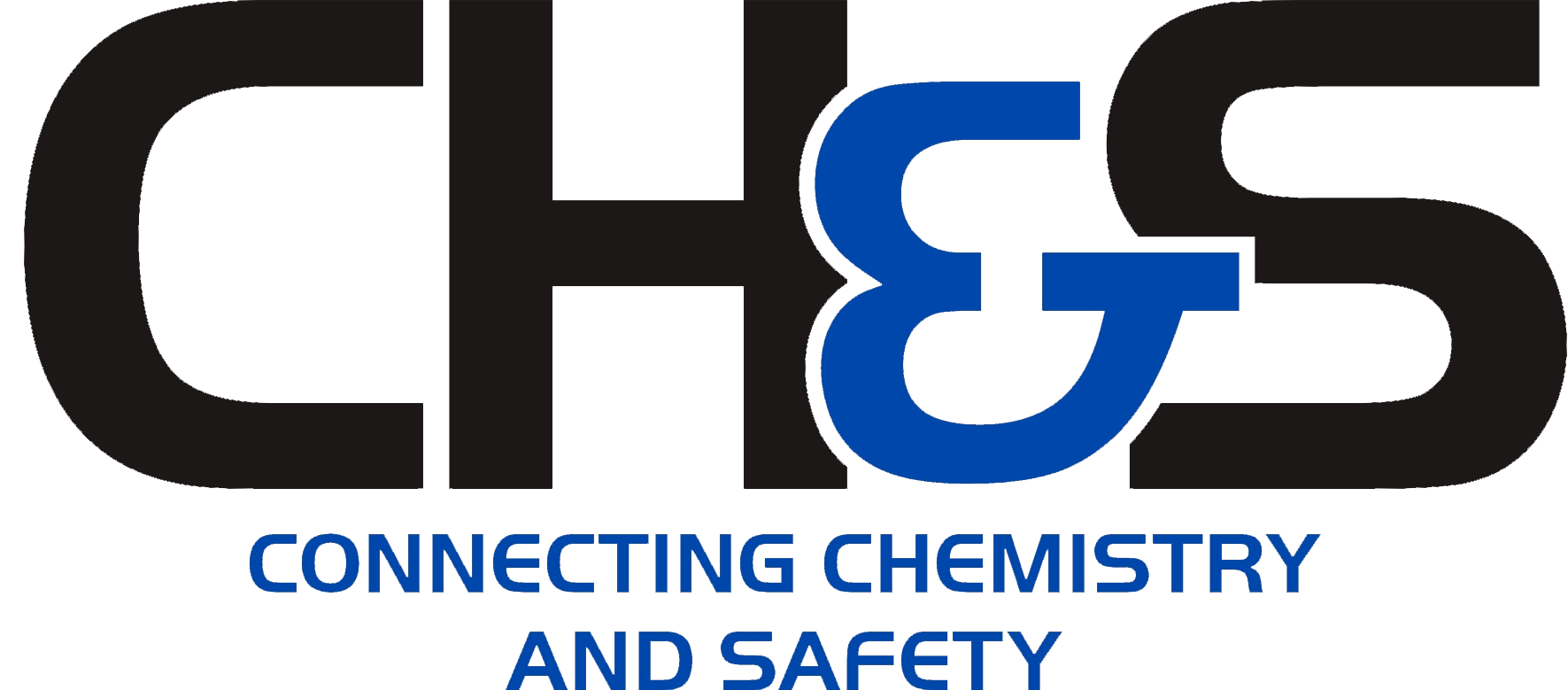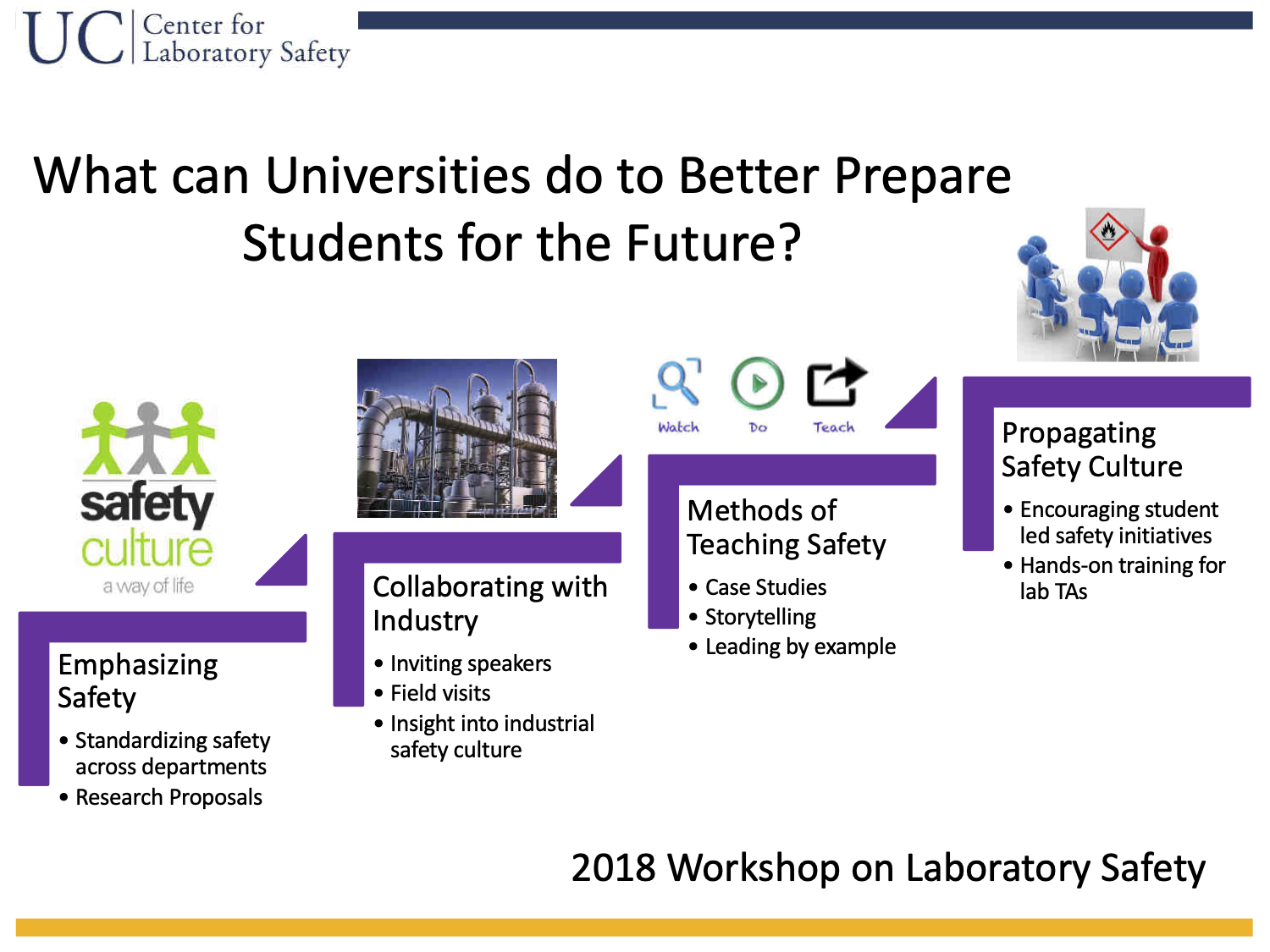Led by:
Imke Schroeder, Ph.D.
UC Center for Laboratory Safety ,UCLA
Dr. Schroeder’s presentation can be downloaded here:
The papers she shared:
- 2020 “Proceedings of the 2018 Laboratory Safety Workshop: Hazard and Risk Management in the Laboratory”: https://pubs.acs.org/doi/full/10.1021/acs.chas.0c00012
- 2016 “Laboratory safety attitudes and practices: A comparison of academic, government, and industry researchers: https://www.sciencedirect.com/science/article/abs/pii/S1871553215000407
- UC Center for Laboratory Safety website: https://cls.ucla.edu/
CONVERSATION HIGHLIGHTS
-
- How was the survey conducted?
- Worked with other university’s EH&S Departments; data directly sent to Imke’s Team; encouraging emails to complete the survey; stopped collecting data when N is representative of the campus; greatest response rate associated with asking researchers in-person to complete the survey
- Speak to relevance of findings for the challenges for promoting responsibilities associated with undefined risks (DURC).
- How to train researchers to think about this.
- Imke has no focus on DURC, but they did look at attitudes
- How accepting are researchers of safety policies?
- Could be embedded with an ethical question.
- The phrase “safety takes priority” was used here whereas Dupont states “Safety and productivity are of equal value.”
- There is a difference between the rules and the tools; we use the RAMP model to train researchers to think critically about their work; “push” information out based on need, but also provide resources so that there is something there when the researcher “pulls” for information
- Should not put safety and productivity at odds; “safety with”… Instead of “safety first, then…”; think of the value-add of working safety and productivity together
- Safety and productivity are the same problem framed differently
- Reaching for accurate risk perception
- Risk perceptions vary from person to person (it’s very personal)
- We delude ourselves that there is one “best risk perception”
- Who resolves productivity vs safety? Safety should take priority in cases where there is a conflict. This is our ultimate responsibility.
- Imke mentioned how big the influence PIs have on research safety in the lab; when a student moves from training with a PI that maintains a strong safety culture, and then the student graduates and moves on to a place with a weaker safety culture, how does that experience translate?
- If a PI emphasizes safety, the lab is much easier to work with for safety professionals; these PIs think about research safety as training their trainees to be safer and better researchers in the greater research community; the emphasis is on professional development, not just about being safe in this particular research lab; also, I am seeing this much more among younger PIs
- Agrees with the PIs correlation on safety
- Does anyone know if any students trained in these “strong safety culture” labs been followed into their careers to see how they do?
- This would be a fantastic and also very difficult project! What we are seeing is that these “strong safety culture” students are going to companies well-known for their emphasis on strong safety culture
- It is very difficult for individuals to sustain their safety culture belief system; in one example, a person maintained a safety standard at one institution, then when they moved to another institution, they abandoned the better safety practice even though they themselves said it was better. When asked why they abandoned it, they said that the safety practice was not required at the new institution, so they didn’t do it. So was this an example of a strong safety culture or an example of more compliance rules creating a safer environment?
- Inspiring a proactive, open-ended way of thinking of safety is more difficult than getting someone to use a particular safety device; extra challenging; Two Categories: motivations via norms and what is incentivized; Norms are important, but incentives tend to beat norms as suggested by Imke’s survey results
- How was the survey conducted?

